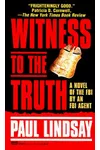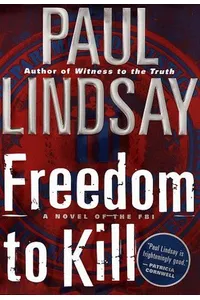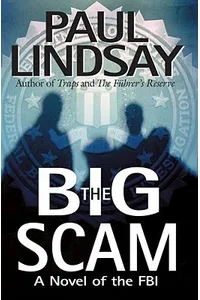Dive into the pulse-pounding world of Paul Lindsay’s FBI series, where gritty crime-fighting meets razor-sharp wit! This six-book saga, penned by a former FBI agent, follows Special Agent Mike Devlin, a rule-breaking maverick navigating Detroit’s criminal underworld. With insider authenticity and high-stakes plots, Lindsay’s novels offer a thrilling peek behind the Bureau’s curtain, blending suspense with a candid critique of federal law enforcement.
What makes this series stand out? It’s not just the heart-racing action—it’s Lindsay’s knack for weaving real-life FBI experiences into fiction, exposing the tension between street agents and bureaucratic brass. Ready to chase fugitives and unravel conspiracies? Let’s explore the FBI series’ gritty charm!
How FBI Began
Paul Lindsay, a 20-year veteran of the FBI’s Detroit office, launched the FBI series in 1992 with Witness to the Truth. A decorated Marine and agent—who nabbed serial killer Benjamin Atkins—Lindsay channeled his career into fiction, creating Mike Devlin as a reflection of his own rebellious streak. His debut stirred controversy, as the FBI bristled at his portrayal of internal dysfunction, even threatening disciplinary action. Yet, Lindsay’s insider perspective became the series’ backbone, fueling its raw authenticity.
Inspired by his work on high-profile cases, Lindsay wrote at night while still an active agent, crafting stories that balanced adrenaline with sharp commentary. His books, published under his name and later as Noah Boyd, captured the gritty reality of law enforcement, earning praise for their realism despite Bureau backlash.
The Heart of FBI
The FBI series kicks off with Witness to the Truth (1992), where Mike Devlin, demoted to wiretap duty for his unorthodox methods, uncovers a Mafia mole in the FBI while racing to save a kidnapped girl. In Code Name: Gentkill (1995), Devlin hunts a serial killer targeting agents, dodging bureaucratic red tape. Freedom to Kill (1997) sees him tackling a hospital blackmail scheme, while The Big Scam (2005) shifts to Agent Nick Vanko’s undercover sting against Brooklyn’s mob.
Lindsay’s novels thrive on themes of rebellion, loyalty, and moral ambiguity. Devlin, a hard-boiled anti-hero, clashes with self-serving superiors, embodying the street agent’s disdain for “suits.” Set in Detroit’s crime-ridden streets, the series blends fast-paced procedurals with dark humor and vivid characters—like rookie Edgar Livingston, Devlin’s ally against corruption. Lindsay’s insider knowledge shines, from wiretap protocols to inter-agency rivalries, making each plot feel ripped from reality.
While some criticize Lindsay’s exaggerated tropes or occasional loose plotting, fans love the series’ raw energy and unfiltered take on the FBI. It’s less about polished heroes and more about flawed, determined agents battling crime and bureaucracy alike.
Why FBI Resonates
The FBI series carved a niche in the thriller genre by offering an unvarnished look at federal law enforcement. Lindsay’s real-world experience—coupled with his willingness to critique the Bureau—set his work apart, resonating with readers craving authenticity over Hollywood gloss. His novels influenced later FBI thrillers, paving the way for authors like John Douglas, who also drew on insider expertise.
Despite Lindsay’s passing in 2011, his series remains a cult favorite for crime fiction buffs, celebrated for its gripping narratives and bold commentary. Its legacy lies in proving that truth can be stranger—and more thrilling—than fiction, inviting readers to question the inner workings of the FBI.
- Publication Years: 1992–2005
- Number of Books: 6
- Notable Award: Lindsay received FBI commendation for catching Benjamin Atkins (1992)
Ready to join Mike Devlin’s rogue crusade? Grab Witness to the Truth and plunge into the FBI series’ thrilling, no-holds-barred world of crime and conspiracy!





